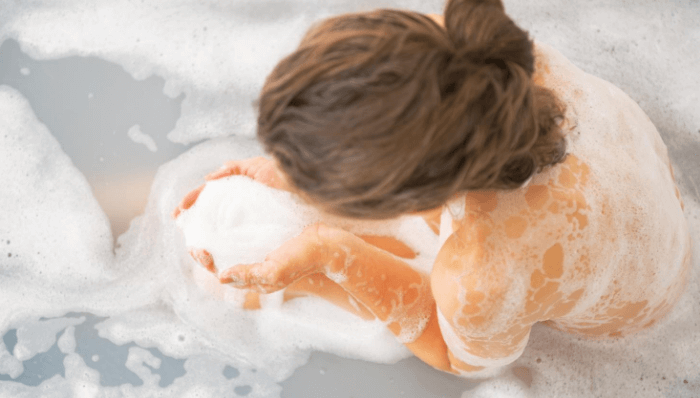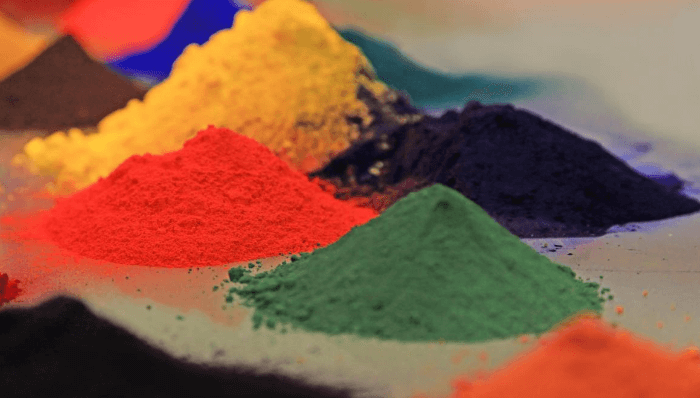For nearly 15 years, public awareness that many mass-produced, conventional skin care products on the market contain ingredients that carry health risks has spread mainstream. It all started with findings from a 2004 study by Dr. Phillipa Darbre, which identified intact parabens in breast cancer tumors, which was suspected to have come from repeated usage of an underarm deodorant product containing them. When that initial study came out, the industry was turned upside down. One could say that this study really was the birth of the green beauty industry, since before that, most consumers would have not even considered that there would be skin care ingredients to avoid.
Cosmetic chemists were all of a sudden asked to reformulate products, manufacturers dealt with an unprecedented amount of product returns and complaints, and the internet took off with blog posts and articles, with angry debates in the comments about whether there was actual need for concern, or if this was instead, just fear-mongering and hype. List of toxic skin care ingredients to avoid (the Dirty Dozen, Dirty Thirty, etc) were widely circulated. Organizations such as the Environmental Working Group, Made Safe, and the Campaign for Safe Cosmetics mobilized to further explore the issue of ingredient safety in cosmetics and personal care products, since the Federal Food, Drug, and Cosmetic Act has not been updated since 1938.
Years later, much has changed in the industry, due to the rapid growth of the green beauty movement, and green chemistry industry. While when the paraben debate first began, there were not many viable alternatives, that is no longer the case. While we could still list pages of skin care ingredients to avoid, today, we’re going to keep it simple and focus on the top five highest priority ingredients (most of these are categories of ingredients) to avoid in skin care.
The 5 Top Priority Ingredients to Avoid in Skin Care
1. Parabens
 The most common “gold standard” preservative in cosmetics, for the majority of the existence of the industry up until 2004 was the family of parabens. Methyl-, propyl-, isobutyl-, and other prefixes of the paraben family offered cosmetic chemists extremely effective broad spectrum protection, ease of formulation, long shelf life (sometimes longer than 3 years), at a very low percentage in just about any emulsion, gel, or water-based product. They are also extremely inexpensive.
The most common “gold standard” preservative in cosmetics, for the majority of the existence of the industry up until 2004 was the family of parabens. Methyl-, propyl-, isobutyl-, and other prefixes of the paraben family offered cosmetic chemists extremely effective broad spectrum protection, ease of formulation, long shelf life (sometimes longer than 3 years), at a very low percentage in just about any emulsion, gel, or water-based product. They are also extremely inexpensive.
There are still chemists, companies, and practitioners who staunchly defend the use of parabens in cosmetics; claiming the it is in such a small amount that it doesn’t make an impact, that parabens are found naturally occurring in plants so they must be safe, that the study itself was flawed, and that there are no good alternatives—therefore products that don’t contain them are dangerous. However, further studies began (studies continue to this day) to clarify the findings of the initial study. While a definitive causal link between parabens and cancer has not been found, the evidence has shown that parabens are endocrine disrupting chemicals, which contribute to body burden, and do pose health risks when used over time–even in tiny amounts. Rather than squabble about parabens, now that we have so many viable alternatives, it just makes more sense to use them instead!
The Spa Dr.® skin care products do not contain parabens.
2. Fragrances
 Synthetic fragrances (listed as “fragrance,” “natural fragrance,” or “parfum” on product labels) are the most likely ingredients in products to cause allergic and irritant reactions, and many of them are toxic. According to the Environmental Health Association of Nova Scotia’s Guide to Less Toxic Products, in 1989 the US National Institute of Occupational Safety and Health evaluated 2,983 fragrance chemicals for health effects. They identified 884 of them as toxic substances. The US EPA found that 100% of perfumes contain toluene, a toxic volatile organic compound (VOC) that can have developmental effects. Besides toluene, some of the other chemicals used to make fragrances are phthalates, synthetic musks, formaldehyde, and several neurotoxins.
Synthetic fragrances (listed as “fragrance,” “natural fragrance,” or “parfum” on product labels) are the most likely ingredients in products to cause allergic and irritant reactions, and many of them are toxic. According to the Environmental Health Association of Nova Scotia’s Guide to Less Toxic Products, in 1989 the US National Institute of Occupational Safety and Health evaluated 2,983 fragrance chemicals for health effects. They identified 884 of them as toxic substances. The US EPA found that 100% of perfumes contain toluene, a toxic volatile organic compound (VOC) that can have developmental effects. Besides toluene, some of the other chemicals used to make fragrances are phthalates, synthetic musks, formaldehyde, and several neurotoxins.
Fragrance blends might contain up to 900 individual constituents, which do not have to be disclosed as per the FDA’s current trade secret law. Even “natural fragrance” contains synthetic constituents (which would also not be disclosed). Look for fragrance-free products, or products scented only with botanical extracts or essential oils (which will be noted on the label with its Latin botanical name).
The Spa Dr.® Skin Care products are either fragrance-free, or naturally scented with essential oils.
3. Anionic Surfactants
 Surfactants are detergent ingredients that work by separating oils from water, so the oils in dirt, sebum, and debris can be washed away. They are most commonly found in facial cleansers, body washes, and shampoos; however milder types may also be found in certain moisturizers and conditioners.
Surfactants are detergent ingredients that work by separating oils from water, so the oils in dirt, sebum, and debris can be washed away. They are most commonly found in facial cleansers, body washes, and shampoos; however milder types may also be found in certain moisturizers and conditioners.
Anionic surfactants are the strongest, harshest type of surfactant on the skin. They strip away the skin’s lipid barrier, which contributes to inflammation, a compromised barrier and skin immune function, a disrupted skin microbiome, as well as skin dryness and sensitivity. Anionic surfactants are also known for skin and eye irritation and potential toxicity—yet they are still the most commonly used surfactants in conventional skincare and personal care products.
Ammonium lauryl sulfate, sodium lauryl sulfate, and sodium laureth sulfate are examples. Instead, look for cleansers and body washes that use gentler surfactants that do not pose the above mentioned risks. Examples include (but are not limited to) sucrose laurate (found in The Spa Dr.® Daily Essentials Step 1 – CLEAR: Gentle Cleanser), lauryl glucoside, decyl glucoside, or cocamidopropyl hydroxysultaine (all found in The Spa Dr.® CLEAN Body Wash).
4. Phenoxyethanol
 This is one of the preservatives that was commonly used to replace parabens in skin care products after the 2004 study rocked the industry. Chemists liked (and still do like) it because it can still be used at a low percentage, is inexpensive, and is very effective at inhibiting the growth of gram positive and gram negative bacteria, mold, and yeast. However, one of the earliest indicators that phenoxyethanol was problematic was reports of eye irritation (it is commonly used in eyeliners and mascaras), as well as skin irritation.
This is one of the preservatives that was commonly used to replace parabens in skin care products after the 2004 study rocked the industry. Chemists liked (and still do like) it because it can still be used at a low percentage, is inexpensive, and is very effective at inhibiting the growth of gram positive and gram negative bacteria, mold, and yeast. However, one of the earliest indicators that phenoxyethanol was problematic was reports of eye irritation (it is commonly used in eyeliners and mascaras), as well as skin irritation.
Phenoxyethanol is also used in the fragrance industry as a fixative, and thus has also been linked to respiratory irritation and allergies. Other potential problems with phenoxyethanol include potential contamination with 1,4 dioxane, which is a carcinogen; as well as potential adverse effects on the nervous system. It’s important to note that Japan has banned phenoxyethanol’s use in cosmetics for the above concerns.
The Spa Dr.® Skin Care does not contain phenoxyethanol.
5. Coal tar dyes
 Colorants in skin care are not all toxic–many green beauty brands have chosen to use natural plant and non-toxic mineral pigments. However coal tar dyes and lake colorants are still the most commonly used synthetic colorants in skin care, personal care products, hair dyes, and color cosmetics. Coal tar dyes are “made by combining various aromatic hydrocarbons like toluene, xylene, benzene, which are obtained from the distillation of bituminous coal. They are also made from petroleum distillates.”
Colorants in skin care are not all toxic–many green beauty brands have chosen to use natural plant and non-toxic mineral pigments. However coal tar dyes and lake colorants are still the most commonly used synthetic colorants in skin care, personal care products, hair dyes, and color cosmetics. Coal tar dyes are “made by combining various aromatic hydrocarbons like toluene, xylene, benzene, which are obtained from the distillation of bituminous coal. They are also made from petroleum distillates.”
Coal tar dyes are carcinogenic when used in concentrations higher than 5%–which might not occur in a single skin care product, but if a person is using a lotion, makeup, and shampoo that contain coal tar dyes daily, it is possible that they might consume that 5% cumulatively. In addition to this very serious concern, coal tar dyes also increase photosensitivity–meaning the skin’s susceptibility to sunburn and skin cancer. They are listed on product labels as a five-digit Color Index (C.I.) number, or as “FD&C” or “D&C” followed by a color name and number.
The Spa Dr.® Skin Care products do not contain synthetic colorants.
When transitioning to an overall healthy lifestyle, simple changes in products you use on a daily basis can make a huge impact in your overall wellbeing.
We hope this list of ingredients to avoid in skin care was more user-friendly than some of the giant lists out there. The Spa Dr.® takes great care to make sure that all the products in the skin care line are safe and non-toxic, and has worked with the Environmental Working Group to make sure of it!
